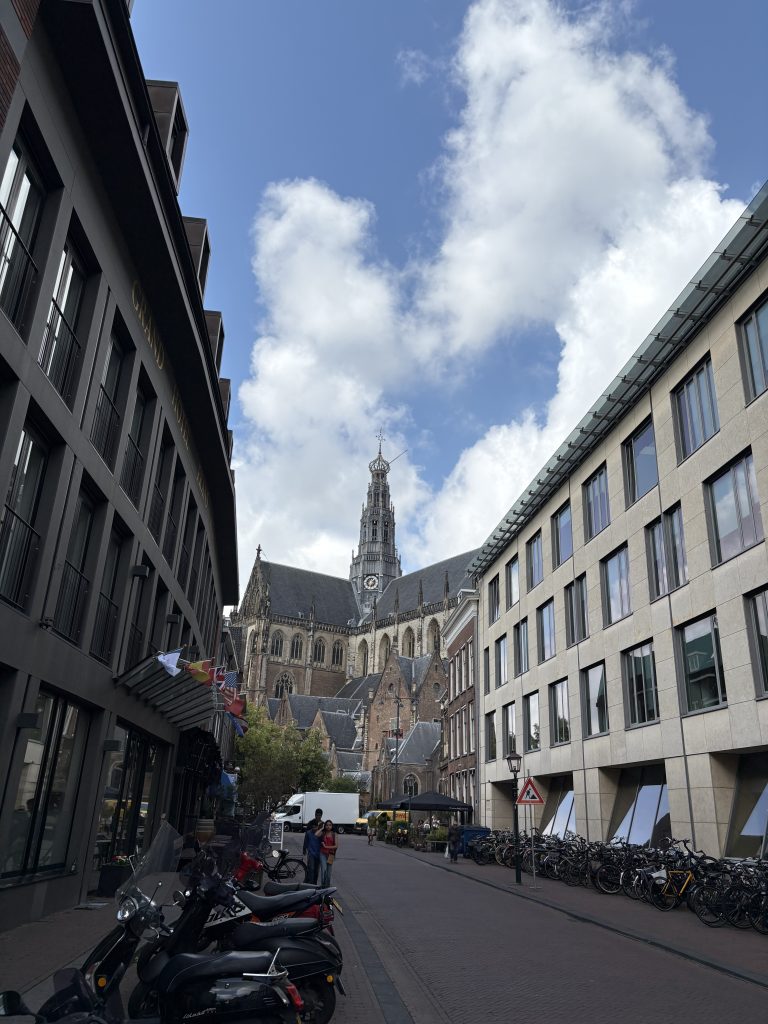Amsterdam's vibrant neighbor, Haarlem, awaits. But what's the best way to get there? This question occupies many travelers' minds when planning a spontaneous day trip. Imagine: it's a sunny Saturday morning, you want to escape the hustle and bustle of Amsterdam, and Haarlem beckons with its charming canals and historic city center. What mode of transportation will you choose?
This comprehensive guide takes you through all the transportation options from Amsterdam to Haarlem. From fast train connections to the flexibility of driving, and from budget-friendly buses to smart combinations, we compare not only costs but also comfort, travel time, and practical aspects. Because a day trip to Haarlem starts with choosing the right transportation.
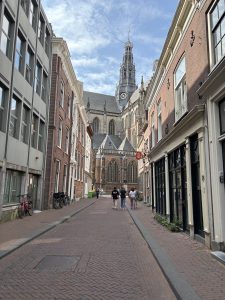
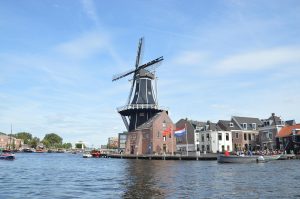
Why is Haarlem the perfect day trip destination from Amsterdam?
Haarlem is like Amsterdam's little sister – all the charm of a historic Dutch city, but without the overwhelming crowds. Its distance of only 20 kilometers makes it an ideal destination for a relaxing day trip. But what makes Haarlem so special for a day trip?
Haarlem's historic center exudes history. The imposing St. Bavo Church dominates the Grote Markt, while the colorful facades of 17th-century merchant houses provide the perfect backdrop for your Instagram photos. According to research by the Netherlands Board of Tourism and Conventions (NBTC), more than 1.2 million tourists visit Haarlem annually, 65% of whom come for a day trip (NBTC, 2024). These figures speak volumes about the city's appeal.
| Aspect | Amsterdam | Haarlem |
|---|---|---|
| Crowd level | Very high | Moderate |
| Historical charm | High | Very high |
| Travel time from city center | AFTER | 15-30 minutes |
| Museum density | Very high | High |
| Parking convenience | Very difficult | Moderate |
But Haarlem is more than just a pretty picture. It's a city that invites you to stroll slowly and explore. Do you know that feeling when you're walking through an old city center and suddenly discover a hidden courtyard? Haarlem is full of such surprises. The Teylers Museum, the oldest museum in the Netherlands, houses treasures you won't find anywhere else. And then we haven't even mentioned the Saturday flower market – an explosion of color and scents that tantalizes your senses.
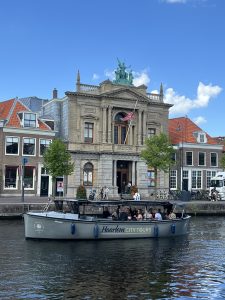
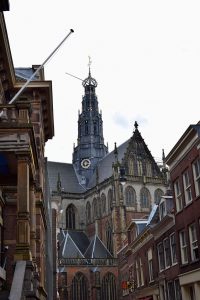
Haarlem's proximity to Amsterdam makes it perfect for all kinds of day trippers. Families with children appreciate the quieter atmosphere and shorter distances. Couples seek romance among the canals and in the cozy cafés. Culture vultures come for the museums and galleries. And shopaholics? They'll find exactly what they're looking for in Grote Houtstraat and Barteljorisstraat, without the crowds of Kalverstraat.
Looking for an activity to discover Haarlem from the water?
Haarlem City Tours is happy to think along!
Climb aboard and see Haarlem at its finest: from the centuries-old canals. As you sail past monumental facades, old bridges, and charming streets, you'll experience the city in a relaxing and unique way. Whether you're with friends, family, or colleagues, this tour will stay with you.
Sailing and enjoying a meal? It's possible!
In collaboration with Buns of Glory, you can now make your cruise extra tasty. Their famous smashed burgers are freshly prepared and served right on board. Delicious food, great company, drinks in hand – this makes your cruise a complete experience.


Have something to celebrate? A birthday, bachelor/bachelorette party, Friday afternoon drinks, or just a fun day with your group? Combine it with a boat tour through Haarlem, delicious food, and a relaxed atmosphere on the water. We'll take care of everything – all you have to do is enjoy.
What are the different transportation options from Amsterdam to Haarlem?
Your choice of transportation determines not only your travel costs but also your entire day trip experience. Do you want stress-free travel and read along the way? Or do you need the freedom to make spontaneous stops at interesting locations? Each transportation option has its own unique character and suits different travel preferences.
Amsterdam and Haarlem are connected by an excellent public transport network. The Dutch Railways (NS) runs frequent trains between the two cities, while several bus companies offer alternative routes. For those who prefer their own transport, the A9 motorway is the main connection, supplemented by provincial roads that wind through the beautiful North Holland countryside.
- Train transport: Fast direct connections via NS trains
- Bus transportation: Economical option with Connexxion and other companies
- Car traffic: Maximum flexibility via A9 or national routes
- Cycling routes: Eco-friendly option for sporty travelers
- Combination trips: Mix of different modes of transport
But here's where it gets interesting: which option best suits your specific situation? A business traveler who needs to get there quickly might choose differently than a family with young children looking for a relaxing day out. The choice depends on factors like budget, travel time, comfort, and personal preferences. Let's thoroughly examine each mode of transportation.
How do you travel by train from Amsterdam to Haarlem?
The train between Amsterdam and Haarlem is like a reliable friend – always on time, comfortable, and worry-free. Dutch Railways (NS) operates this route with an impressive frequency, even during peak hours. But how exactly does it work, and what should you know before boarding those blue trains?
Trains run every 15 minutes throughout the day between Amsterdam and Haarlem. During peak hours, this frequency is often increased to every 10 minutes. The average journey time is 18-20 minutes for the direct connection, depending on the departure station in Amsterdam. This makes the train the fastest option for your day trip to Haarlem.
Comfort on NS trains has improved significantly in recent years. Modern Sprinter trains feature air conditioning, spacious seats, and free Wi-Fi. Special storage compartments are available for passengers with luggage, and the wide aisles make boarding and alighting easy. According to NS statistics, 92% of passengers on this route have a positive travel experience (NS, 2024).
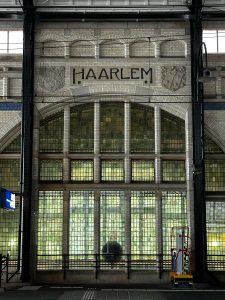
Which train stations can you use for your journey to Haarlem?
Amsterdam offers several departure points to Haarlem, each with its own advantages. This choice can make the difference between a smooth start to your day trip and unnecessary stress. Which station best suits your location and plans?
Amsterdam Centraal is the most popular departure point for Haarlem. Direct Sprinter trains depart from here every 15 minutes. The advantage? You can reach Haarlem's city center in just 19 minutes. Amsterdam Centraal is easily accessible by public transport from all over Amsterdam and offers all the amenities you need: shops, restaurants, and restrooms.
Amsterdam Sloterdijk is an interesting alternative, especially for travelers from Amsterdam West. Although you usually have to transfer here, this station can be strategically more convenient if you're coming from certain neighborhoods. Amsterdam Zuid is currently not directly connected to Haarlem by train, so travelers from this station must travel via Centraal or Sloterdijk.
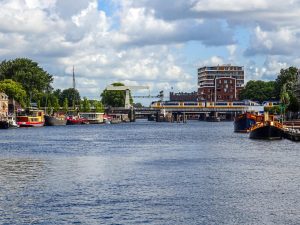
How much does a train ticket from Amsterdam to Haarlem cost?
Train ticket prices can be confusing, with varying fares and discounts. But what do you actually pay for a trip to Haarlem? And how can you save on your train fare?
A one-way ticket from Amsterdam to Haarlem costs €4.20 for adults (as of January 2025). A return ticket costs €8.40. This may seem expensive for a short distance, but compare it to parking fees in Haarlem and gasoline costs, and the picture becomes more nuanced. Children aged 4-11 travel for half price, and infants up to 4 travel free.
NS offers various discount options for frequent travelers. NS-Flex season tickets can yield significant savings, especially if you travel to Haarlem more than once a month. A weekend discount of 40% is available for holders of certain season tickets. Students and seniors can take advantage of specific discount schemes that further reduce costs.
What are the advantages of traveling by bus to Haarlem?
Traveling to Haarlem by bus is like taking the slow road—you see more of the scenery, it costs less, but you do need to allow a little extra time. For budget-conscious travelers and those who enjoy the view, the bus can be a surprisingly pleasant option. But what exactly are the advantages of this form of public transport?
The cost savings are the most striking advantage of bus travel. A bus ticket from Amsterdam to Haarlem costs between €3.50 and €4.50 one-way, depending on the operator and ticket type. This is approximately €15-20% cheaper than the train. For families, these savings can quickly add up to a significant amount, especially when you factor in return tickets for several people.
But money isn't everything. Bus travel offers a different experience than the train. You travel through residential areas, past parks, and through small villages you can't see from a train. It's like getting a mini-tour before you even arrive in Haarlem. Modern city buses are equipped with air conditioning, low entry, and often Wi-Fi. For people with limited mobility, buses are often more accessible than trains.
Which bus lines run from Amsterdam to Haarlem?
The bus network between Amsterdam and Haarlem is more extensive than many people think. Several operators serve this route, each with their own specialties and advantages. Which route best suits your travel plans?
Connexxion operates the main bus routes between Amsterdam and Haarlem. Line 300 is the fastest direct connection, running approximately every 15-20 minutes during peak hours. This bus route primarily uses the A9 motorway, keeping travel time to approximately 35-40 minutes, depending on traffic. Line 300 stops at strategic points in both cities, allowing you to disembark close to your destination.
Regional bus lines offer more stops but slower connections. Line 80 runs a picturesque route through Spaarndam and Penningsveer, perfect for travelers who want to experience the North Holland countryside. This route takes about 50-60 minutes, but offers stunning views of the Spaarne River and historic villages. For adventurers with time on their hands, this is a hidden gem of public transport.
How long does the bus journey from Amsterdam to Haarlem take?
Time is relative, they say. And that's certainly true for bus trips to Haarlem. While the train gets you to your destination in 19 minutes, the bus takes a bit longer – but offers other advantages. How much extra time should you actually allow for a bus trip?
Connexxion's direct bus line 300 has an average journey time of 35-40 minutes from Amsterdam Central Station to Haarlem City Center. During peak hours, this can increase to 50 minutes due to heavy traffic on the A9. On weekends and outside peak hours, the bus is often faster, sometimes even within 30 minutes. Journey times depend heavily on the departure time – an early morning trip is considerably faster than a journey during the evening rush hour.
Regional bus lines like line 80 have longer travel times of 50-70 minutes, but in return, they offer a beautiful route through the North Holland countryside. Think of this time difference as an investment in experience. While train passengers speed through tunnels and past industrial areas, you'll enjoy meadows with cows, historic windmills, and charming villages. For photography enthusiasts and nature lovers, this extra travel time can actually be a plus.

Is traveling to Haarlem by car a good option?
Driving to Haarlem is like choosing freedom over convenience. You're not bound by departure times, can spontaneously detour, and have your own private space. But is this freedom worth the extra cost and potential headaches? Let's be honest about the pros and cons of driving to Haarlem.
The biggest advantage of a car is flexibility. Want to take a detour to Keukenhof Gardens (in season) or stop at a picturesque village? No problem. Do you suffer from claustrophobia on crowded trains? Your own car offers the privacy and space you're looking for. Families with young children often appreciate the ability to bring extra luggage without the hassle of lugging suitcases on public transport.
On the other hand, driving to Haarlem presents challenges. Heavy traffic on the A9 can make your travel time unpredictable. What's normally a 25-minute drive can stretch to an hour or more during peak hours. Parking in Haarlem's historic city center is limited and expensive. And that's not even mentioning the environmental impact—something a growing number of Dutch people are considering when making their travel decisions.
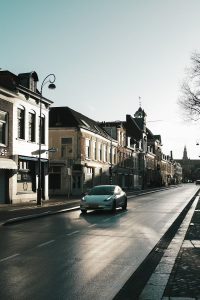
| Aspect | Benefits Car | Disadvantages of a Car |
|---|---|---|
| Flexibility | Leave whenever you want | Depending on traffic |
| Costs | No per-person rate | Gasoline + parking |
| Comfort | Private room, air conditioning | Stress of driving |
| Environment | – | CO2 emissions |
What are the parking costs in the center of Haarlem?
Parking in Haarlem is like a game of chess – you have to think strategically and sometimes make sacrifices. Haarlem's city center uses a zoning system where parking fees vary by location and time of day. How much will you pay for a day of parking?
In Haarlem's city center (red zone), you pay €3.60 per hour for street parking. A full day of parking comes to around €25-30, depending on how long you stay. The blue zone, a little further from the city center, costs €2.40 per hour. Parking garages such as The Grote Markt Garage and Cronjé Garage charge between €2.50 and €4.00 per hour, with daily maximums between €15 and €25.
But here's the strategic point: free parking still exists in Haarlem, if you know where to look. Residential neighborhoods like Vijfhoek and parts of Haarlem-Noord offer free parking within a 10-15 minute walk of the city center. For budget-conscious drivers, this can mean significant savings. Do pay attention to parking signs – some streets have time limits or resident parking.
- Red zone center: €3.60 per hour, daily maximum €30
- Blue zone: €2.40 per hour, daily maximum €20
- Parking garages: €15-25 per day
- Free zones: 10-15 minutes walk from the center
- P+R facilities: €5 per day including bus transport
What is the best route to take by car?
Choosing a route to Haarlem is more than just taking the fastest route. Each route has its own character, from the efficient highway to the scenic country lanes. Which route suits your travel goals and personality?
The A9 motorway is the most direct route from Amsterdam to Haarlem. From the A10 ring road, take exit S116 towards Haarlem/Alkmaar. This route is approximately 20 kilometers long and takes 20-25 minutes under normal traffic conditions. The A9 is wide, well-maintained, and has clear signage. For those looking for a fast and efficient journey, this is the obvious choice.
But what if you have time for a more scenic route? The N208 through Spaarndam offers a beautiful alternative. This route takes you along the North Sea Canal, through historic villages, and past traditional Dutch landscapes. You'll pass through Halfweg and Spaarndam, among other places – names that tell stories of centuries-old trade routes. This route is about 5 kilometers longer and takes an extra 10-15 minutes, but offers a much richer visual experience. Photographers and those who appreciate authentic Dutch culture will appreciate this route.
What is the cheapest way to travel from Amsterdam to Haarlem?
Money doesn't buy happiness, but it does help when planning your day trip. With rising costs for everything from gas to train tickets, budget-conscious travel is becoming increasingly important. But what's really the cheapest way to get to Haarlem?
At first glance, the bus seems like the winner. With tickets starting at €3.50 one-way, it's clearly cheaper than the train (€4.20). But the story gets more complex when traveling with several people. A family of four pays €28 for a return bus ticket, while the same family with a car will spend around €15-20 on fuel (depending on fuel prices and car efficiency), plus parking fees.
The ultimate winner depends on your specific situation. For solo travelers, the bus is often the cheapest option. For couples, the train and bus are roughly equivalent, with comfort and travel time being decisive factors. For families of three or more, the car becomes more economically attractive, especially if you can park for free or are willing to walk a bit further.
| Means of transportation | 1 Person (return) | 2 Persons (return) | 4 Persons (return) |
|---|---|---|---|
| Bus | €7,00 | €14,00 | €28,00 |
| Train | €8,40 | €16,80 | €33,60 |
| Car (excl. parking) | €15-20 | €15-20 | €15-20 |
| Car (incl. parking in the center) | €40-50 | €40-50 | €40-50 |
How do you compare total travel costs including parking and fuel?
A fair cost comparison is like comparing apples and oranges – you need to consider all factors to get a reliable picture. Many travelers make the mistake of focusing only on direct transportation costs, but forget about the "hidden" fees that can significantly increase your bill.
For car travel, besides fuel costs, you also need to factor in wear and tear, insurance (half a day), and of course, parking. A realistic calculation for an average car: fuel costs €0.15 per kilometer, plus €0.10 per kilometer for wear and maintenance. For a 40-kilometer return trip to Haarlem, you'll end up with €10 in variable costs, plus parking fees that can range from €0 (free zones) to €30 (city center).
Public transport seems more transparent, but even here there are hidden costs. Need to take the tram to Amsterdam Central Station first? That costs extra. Want a snack and drink during the journey? That also counts. Some travelers forget the time factor: if your time is worth money, then those extra 20 minutes on the bus versus the train do make a difference in your total 'cost'.
- Car fuel costs: €10-15 return (depending on car and fuel prices)
- Parking rates: €0-30 per day (location dependent)
- Car wear and tear costs: €4-6 per trip
- OV chip card costs: Included in ticket price
- Additional transport to departure point: €2-4 per person
Which transport option is the fastest for your day trip to Haarlem?
Speed is king in our hectic society. You want to maximize your time in Haarlem, not waste hours traveling. But which mode of transportation will get you to your destination fastest? The answer isn't as simple as it seems.
The train wins hands down in terms of pure travel time. At 18-20 minutes from Amsterdam Centraal to Haarlem Centraal, it's by far the fastest option. But—and here's the nuance—pure travel time doesn't tell the whole story. You also need to factor in the time it takes to get to the station, any waiting time for the train, and the walk from the station to your final destination in Haarlem.
For a realistic speed comparison, we need to look at the total door-to-door travel time. From any location in Amsterdam to the center of Haarlem: the train takes an average of 45-60 minutes total (including transport), the car 35-50 minutes (depending on traffic and parking), and the bus 50-70 minutes. An interesting detail: during peak hours, the car can be slower than the train due to heavy traffic on the A9.
| Means of transportation | Pure travel time | Door-to-door (off-peak hours) | Door-to-door (peak) |
|---|---|---|---|
| Train | 18-20 min | 45-50 min | 50-60 min |
| Auto | 25-30 min | 35-45 min | 50-75 min |
| Bus | 35-40 min | 50-60 min | 60-80 min |
But speed isn't just about minutes on the clock. It's also about predictability and stress. A train that always takes 20 minutes is more practical than a car that sometimes takes 25 minutes but can take 60 minutes in traffic jams. For business trips or those with tight schedules, the train offers the best combination of speed and reliability. For flexible day trippers who aren't bound by strict time limits, the car can be the fastest option during off-peak hours.
How does the time of day you travel influence your choice of transportation?
Timing is everything when traveling to Haarlem. The difference between a relaxing ride and a stressful experience often depends on when you leave. How can you use the timing strategically to make the best transportation choice?
The morning rush hour (7:00-9:00 AM) and evening rush hour (5:00-7:00 PM) completely transform traffic around Amsterdam and Haarlem. What is normally a leisurely 25-minute drive can stretch to an hour or more. The A9 becomes a snail's pace, and even buses are delayed. During these times, trains have a clear advantage: they run on dedicated tracks and are not affected by road traffic.
Weekends offer a completely different story. Early Saturday morning (before 10:00 AM) is ideal for driving – light traffic, fast-moving traffic, and often free parking on Sundays in some areas of Haarlem. Saturday afternoon brings the tourist crowds, which fill the city center and make parking more difficult. Sunday morning is perfect for all modes of transport – light traffic, less crowds on public transport, and a relaxed atmosphere.
- Morning rush hour (07:00-09:00): Train has big advantage
- Afternoon (10:00-16:00): Car and train about the same
- Evening rush hour (5:00-7:00 PM): Avoid car, choose public transport
- Evening/night: Car is fastest, but watch out for the last trains
- Weekend early: Car benefits from quiet traffic
Seasonal influences also play a role that many travelers overlook. During the Keukenhof's flowering period (March-May), the A9 towards Haarlem is particularly busy with tourists. Summer weekends bring more cyclists and pedestrians into the city center, making parking more complex. Winter weather can disrupt train and bus services, while driving becomes more risky. A seasoned Haarlem visitor not only plans the time of day but also considers seasonal factors.
What are the best tips for a carefree day trip to Haarlem?
A carefree day trip starts with good preparation. The difference between a stressful day and a relaxing outing often lies in the details you arrange beforehand. What practical tips will make your Haarlem experience smoother and more enjoyable?
Download the appropriate apps on your phone beforehand. The NS app provides real-time train information and lets you buy digital tickets. The 9292 app plans multimodal journeys and warns of disruptions. For drivers, the EasyPark app is handy for paying parking fees without having to go to a ticket machine. Google Maps recently added better cycling routes – useful if you plan to cycle part of your journey.
Buy your tickets online in advance. This not only saves time but often money as well thanks to online discounts. Train tickets purchased through the NS app are sometimes cheaper than at the ticket machine. Parking garages offer early booking discounts through their websites. Bus e-tickets through the Connexxion app avoid the hassle of handling cash and are usually a few euros cheaper than buying tickets from the driver.
| Preparation | Train | Bus | Auto |
|---|---|---|---|
| Download apps | NS, 9292 | Connexxion, 9292 | EasyPark, Google Maps |
| Advance tickets | NS app discount | E-ticket discount | Pre-book parking garage |
| Backup plan | Bus as an alternative | Train as an alternative | Search P+R options |
Always have a backup plan. Trains can be cancelled due to technical problems, buses can get stuck in traffic, and parking garages can be full. Experienced travelers always have a plan B. Know the alternative routes, keep contact information for taxi services, and make sure your public transport card is charged in case of emergencies. A little paranoia can prevent a lot of stress during your day trip.
Which combination of transportation modes works best?
Why limit yourself to just one mode of transportation? The smartest travelers combine different options to take advantage of each. Which combinations offer the best balance between cost, comfort, and efficiency?
The most popular combination is the train there and the bus back (or vice versa). You benefit from the train's speed when you need it most, and save money with the cheaper bus when you're less in a hurry. Many day trippers take the train in the morning to arrive quickly and have plenty of time for sightseeing, and choose the bus in the evening because they can relax and enjoy the scenery.
Another smart combination is driving to a Park and Ride (P+R) facility, followed by public transport into the city center. Haarlem has P+R locations on the outskirts of the city where you can park for €5 per day, including bus transportation to the city center. This combines the flexibility of a car (especially useful for families with luggage) with the convenience of public transport in the busy city center.
- Train there + bus back: Speed + cost savings
- Car to P+R + bus center: Flexibility + easy parking
- Cycling to station + train: Sport + speed
- Bus there + train back: Landscape + quick return
- Car there + public transport back: Luggage convenience + no parking stress
For the more adventurous traveler, the bike-train combination is an interesting option. Cycle to Amsterdam Central Station (with good bike parking), take the train to Haarlem, and stroll through the compact city center. This combines exercise, speed, and environmental friendliness. Some people even cycle all the way to Haarlem – about 45 minutes via the Spaarne cycle path – and take the train back when they're tired. This approach works particularly well in spring and summer when the weather cooperates.
How do you plan the perfect day trip to Haarlem within your budget?
A perfect day out doesn't have to be expensive. With smart planning, you can enjoy everything Haarlem has to offer without breaking the bank. How do you strategically divide your budget between transportation, activities, and food?
Start with a realistic total budget for your day trip. For an adult, you can budget €30-50 for a comfortable day, €20-30 for a budget day, and €60+ for a luxury experience. Divide this budget according to the 40-30-30 rule: 40/100/300 for activities and sights, 30/100/300 for food and drinks, and 30/100/300 for transportation. This split ensures you don't overspend on transportation at the expense of fun things to do in Haarlem itself.
Transportation options within different budget categories vary significantly. With a budget of €20-30, you might choose the bus (€7 return) and save money for free activities like walking through the city center, viewing street art, and enjoying the architecture. A mid-range budget of €30-50 allows for the train (€8.40 return) plus a museum visit. With a larger budget, you can drive, park centrally, and not worry about extra costs.
| Budget category | Total budget | Transport | Activities | To eat |
|---|---|---|---|---|
| Budget | €20-30 | Bus (€7) | Free (€8) | Picnic (€10) |
| Middle | €35-50 | Train (€8.40) | Museum (€15) | Lunch café (€20) |
| Luxury | €60+ | Car + parking (€35) | Multiple museums (€25) | Dinner restaurant (€35) |
Secret budget tips known to locals: visit Haarlem on Sunday for free parking in many zones, pack your lunch and eat in Haarlemmerhout Park, download museum apps for free audio tours, and use the Haarlem City Walk brochure (free at the VVV tourist office) for self-guided tours. Many churches and courtyards are free to visit and offer wonderful photo opportunities. The Grote Markt is a free open-air museum brimming with history.
Which transportation option best suits your travel preferences?
The perfect transportation choice is as personal as your favorite color. What's ideal for one person can be a nightmare for another. How do you discover which option best suits your unique travel preferences and lifestyle?
Are you a stress-free traveler who enjoys predictability? Then the train is your best friend. Every 15 minutes, always the same rhythm, no surprises. You can read a book, check your phone, or just stare out the window while someone else does the driving. Train travelers are often people who appreciate structure, value their time, and prioritize comfort over cost savings.
Adventurous souls often choose the car. They love the freedom to stop spontaneously, take a detour, or explore something interesting they encounter along the way. Drivers are typically people who want control over their journey, value their own space, and are willing to pay extra for flexibility. They see the journey itself as part of the adventure, not just a means to an end.
- Perfectionists: Choose a train for reliability and punctuality
- Adventurers: Prefer car for freedom and flexibility
- Budget-conscious: Take the bus despite the longer travel time
- Environmentally conscious: Combine cycling with public transport
- Families: Appreciate the space and convenience of the car
- Social types: Enjoy the pleasant atmosphere on the bus or train
Also consider your daily routine and energy level. Are you a morning person who wants to get an early start? The first train of the day is often quiet and comfortable. Do you like to stay late and want a flexible return time? The car gives you that freedom. Do you enjoy people-watching and social interaction? Buses and trains offer more opportunities for interesting encounters than the isolation of your own car.
The best transportation choice also evolves with your life stage. Students often choose the cheapest option, regardless of travel time. Young professionals value speed and reliability above all else. Families with children need space and flexibility. Seniors prefer comfort and convenience. Recognize where you are in life now and choose the transportation mode that best suits your needs. Your perfect choice today doesn't have to be your choice tomorrow.
